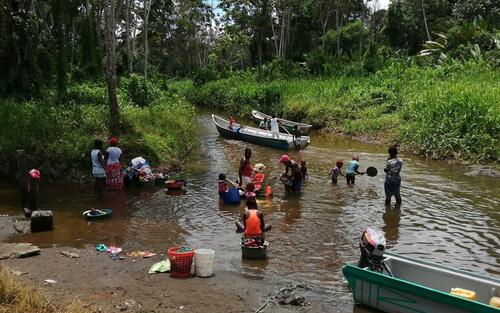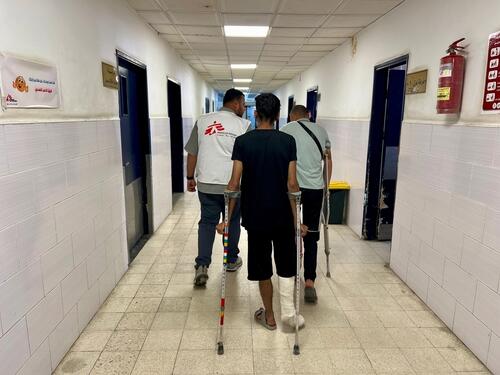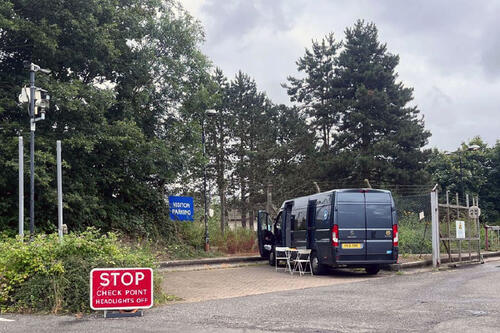Four years after the conclusion of the much-lauded peace process between the Colombian government and the FARC group, Médecins Sans Frontières (MSF) is taking healthcare to vulnerable communities trapped in a cycle of violence in the southwestern department of Nariño. Steve Hide, our head of mission in Colombia, recounts his recent visit.
In the backwaters of Colombia’s Pacific coast, the local remedy for a venomous snakebite costs the same as a coffin.
“You can choose: the cure or the coffin. Either way, you’ll pay,” explains Francine*, an elderly curandera, or traditional healer, sitting on her wooden porch.
The house is by a brown river which flows to the grey Pacific Ocean, at least one day’s journey downstream in a canoe with outboard motor.
In many parts of the river the banks are covered in small bushes – seedlings for the coca plantations that spread far into the surrounding flat land – dotted among jungle and plantains and yams. Coca farmers stroll along the riverbank carrying sacks of seedlings and swinging machetes.
Meanwhile on her porch, Francine continues with a list of snakes that bite people working on the small farms: the verrugosa, South America’s largest venomous snake; the talla equis, a smaller but equally dangerous viper; and the papagayo, which likes to hide in trees.
Her herbal recipes are family secrets strictly guarded over generations. Clearly people trust her enough to take the cure. Francine’s business relies, to some degree, on the fact that there are few health alternatives in this remote corner of Colombia. The nearest health post is six hours away by canoe with outboard motor. Petrol is scarce, or expensive, and even if you can get a ride, armed groups patrol the backwaters and might not let you leave.
This is the triple whammy that affects Afro-Colombian communities in the coastal lowlands of the Nariño department: years of institutional neglect, seemingly endless jungle and winding rivers, and the risk of guys with guns around every bend.
It has taken me two days to get here: one day in a car over rutted, muddy roads, then two canoe journeys and a walk through the jungle.
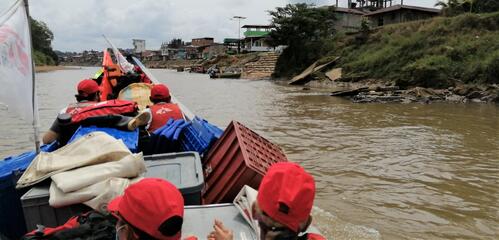
The second canoe ride was no swan down the river: the boat driver rammed a submerged tree trunk and was catapulted into the water. By the time I had shut down the motor, we were already some way downstream, so I restarted it and reversed to where he was clinging to a log.
It was a small incident but it brought us closer together and created some laughs in the village in the following days.
“Have you fallen in the river today?” I yell at him as he walks past. “Have you driven the canoe today?” he yells back. Everyone here yells, even if they are two feet away.
I am here working with MSF as part of a medical team bringing healthcare to the villages along the riverbanks. The doctors and nurses are busy in an improvised clinic set up in an abandoned school building… but only after a group discussion on the multitude of hornet nests dangling from the ceiling.
The MSF team and our local fixers seem to be in two camps: ignore the hornets, which are now flying around us; or smoke them out.
“Leave them alone and they won’t sting,” says someone. We adopt that strategy and spend the next few days with the large brown insects flying around us.
The next day, new faces appear in the village: a group of tough looking guys sitting on plastic chairs on an empty lot. I invite myself to join them and talk about health.
MSF teams were in this area soon after local farmers were forced at gunpoint to flee into the jungle, only to return to find their houses looted, their crops destroyed and the dismembered bodies of combat victims buried piecemeal around the village.
At first they seem uncomfortable, but soon we are chatting about local food sources and borojó, a jungle fruit that is widely sold as an aphrodisiac in Colombian cities but is a vitamin-rich staple in local communities.
Later that evening I see the same focus group sat in the same chairs, now draped in machine guns. Clearly an armed group. Oops. Have I stirred up a hornet nest?
After dinner we pass by their hangout on our way to wash in the river. The fighters yell a cheery “buenas noches”. So far so good.
These gunmen seem at home in the village, but it is hard to gauge how the locals regard them. Their presence is related to the coca plantations, which at intervals are forcibly eradicated by state troops who arrive suddenly by helicopter. The gunmen are also there to defend the zone from other non-state armed groups which are pushing into the area.
The bottom line is that guns are an essential ingredient of cocaine production and, under their shadow, folk are reluctant to talk openly about the conflict. What seems clear is that people are scared to move around. Someone tells me his brother was recently killed at a checkpoint on the river.
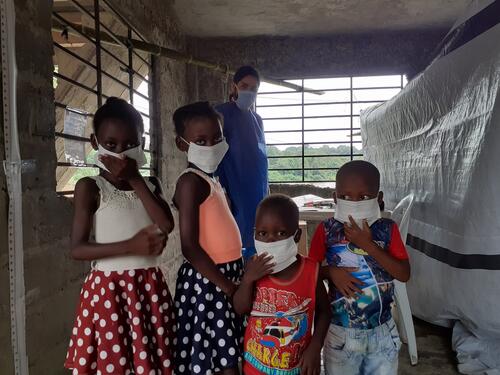
The local armed group is a remnant of the FARC guerrillas who rejected the peace process and continue squabbling over control of lands bordering Ecuador. But holding on to vast swathes of coca plantations and hidden cocaine labs is never easy. Other dissident groups are on the warpath and, already, fighting has broken out upriver.
MSF teams were in this area soon after local farmers, known as campesinos, were forced at gunpoint to flee into the jungle, only to return to find their houses looted, their crops destroyed and the dismembered bodies of combat victims buried piecemeal around the village.
Mental health is a major issue in the aftermath of violent events. And these events are increasing.
“It was a symbolic act of terror,” an MSF colleague Samuel tells me. “They turned the village into a cemetery.”
MSF sent a medical team and psychologists to the village. Mental health is a major issue in the aftermath of violent events. And these events are increasing.
The much-lauded 2016 peace process between the government and the FARC group has hardly touched here, and may even have made things worse, as fragmented groups in the Pacific coastal region squabble over the spoils left behind by the guerrillas.
Massacres and mass displacements are monthly events, and other less visible incidents, such as confinements, combat and individual killings, go on constantly behind the curtain of conflict.
Samuel is leading this particular MSF team visiting the area. He has a good grasp of local geography and context, though I quickly get lost in the alphabet soup of armed groups: GUP, FOS, ELN, AGC, E30FB, Frente 30, not to mention Los Cuyes and Los Contadores.
Samuel shows me photos of a nearby health post shot to shreds and filled with grenade shrapnel, a result of combat between opposing non-state groups earlier in the year.
How does MSF navigate this maze of obstacles to reach vulnerable communities with healthcare? One advantage is MSF’s 30 years of experience working in the Colombian conflict.
“The older fighters remember us from the days gone by, and that helps,” says Samuel, who is aware that new groups of young fighters could pose a higher risk to medical teams entering dangerous zones.
The repeating cycles of conflict become even more apparent when Samuel shows me photos of a nearby health post shot to shreds and filled with grenade shrapnel, a result of combat between opposing non-state groups earlier in the year. MSF health teams visited the community a month later.
The irony is that ten years ago MSF teams worked in the same place during an earlier spate of fighting. In fact, back then MSF rebuilt the same health post.
“Sometimes it seems like we’re going round in circles,” says Samuel.
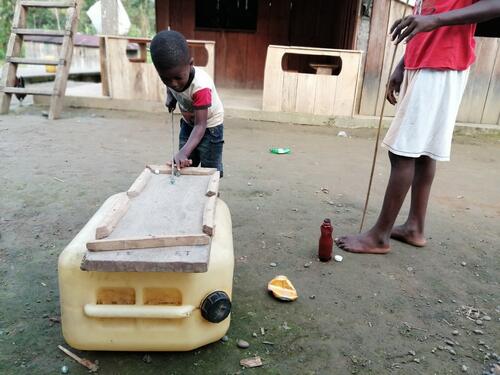
But this time around MSF has a new strategy. Rather than focus on health posts and infrastructure (which tend to fall down again), a “people-centred approach” has been adopted that aims to increase their resilience to repeated cycles of conflict, explains Samuel.
That means putting MSF teams more permanently in communities – of course giving direct medical care, but also engaging with traditional self-help systems.
“Even before the conflict, these communities created their own coping mechanisms, often based on traditional health practices,” says Argote.
This explains why I am now upriver talking to an elderly birth attendant about how much she charges to deliver a baby.
“It’s 200,000 pesos for boy and 100,000 for a girl,” she says, though why boys cost more is not exactly clear.
For the next few days, while the medical team are busy dodging hornets in the clinic, I wander through the community talking to spiritual healers who fix the evil eye, yerbateros (herbalists) who treat malaria with local plants, and a cosero – ‘stitcher’ – who sews up wounds for 20,000 pesos a stitch.
Most adults bear wounds, often from razor-sharp machetes, and not all are accidents. Alcoholism and domestic disputes are rife in these riverine communities.
Then we meet Wilson, a microscopista from a village downriver. He is the remnant of a once-strong network of locals trained to use a microscope to spot malaria parasites on blood samples smeared on glass slides.
Years back, every village had a microscopista, plus a powerful microscope, some basic lab supplies and a box of malaria pills to treat positive cases. This brought to their doorstep lifesaving diagnosis and treatment for a disease which struck them down more often than any other.
But like many things in rural Colombia, the system here has slowly wound down. Microscopistas are no longer contracted by local health departments, supplies rarely arrive, and, without proper maintenance, the microscopes are growing mould.
Could the system be revived? Wilson is hopeful: he has tested 22 patients in two days, of whom 13 were positive for the most deadly falciparum strain. But they will still have to travel to the hospital to get treatment – or take their chances with the home-grown herbal remedy.
Yerbateros also use their anti-fever concoctions to treat COVID-19, which supposedly peaked in the area last May. Many swear by infusions of matarraton, a shrubby tree common throughout Colombia, whose leaves are a staple for home cures and are now touted as a miracle cure for COVID-19. As its name – “mouse-killer” – suggests, extracts have proven pharmacological effects on rodents and insects, and it is commonly used to lower fevers.
But if COVID-19 has been and gone, malaria and ailments locally referred to as ‘virosis’ or ‘quiebrahuesos’ (breakbone) – such as dengue, Zika and chikungunya – still persist. There is a long queue of people with symptoms waiting outside the makeshift clinic.
In the classroom next door, perched on rickety school chairs, children are colouring in photocopied sheets, a thoughtful touch by the MSF psychologist who brought pencils and paper.
“This keeps them occupied while their mums are waiting for the clinic,” she says.
With the lack of family planning and reproductive healthcare, many mothers have five children, even in their 20s, and are desperate for the contraceptive implants that can prevent pregnancy for five years.
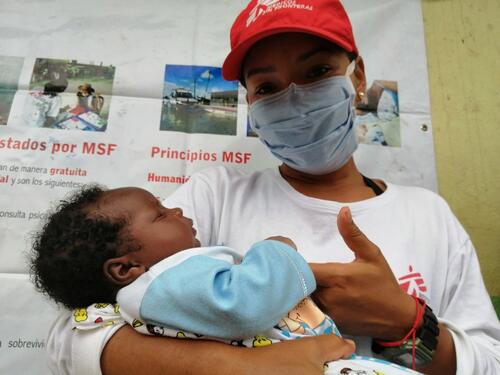
The procedure takes time: mothers must first be tested and assessed if they fit the criteria, then given a local anaesthetic in the arm before the plastic strip implants are pushed under the skin through a brutally large steel needle.
Implants are the most requested medical service as many women try to escape the expectation of being a baby-mill. Large families are the norm here: one boat driver has 15 children, and he proudly tells us about his friend who has 35 offspring by three partners.
Kids are everywhere, engaged in a fascinating variety of active play using whatever comes to hand. Some build helicopters from sticks and leaves and send them spiralling into the air. Others spin hand-made tops or run through the village after a rolling bike tyre – a version of the ‘hoop and stick’ seen in illustrated Victorian-era novels.
I watch a group of kids – none more than eight years old – commandeer a canoe and propel it up the river using bits of scrap wood for paddles. Others wade in the shallows hunting for crabs.
I imagine this idyll is short-lived. Young teenagers are expected to pick coca on the farms, which can be several hours’ boat ride from the village. Adolescent girls are expected to start families at 15. That’s also the age when the armed groups come looking for volunteers.
At present, the gangs are not forcibly recruiting children, explains the local schoolteacher. But joining a group is attractive to impressionable youngsters with few alternatives. Keeping kids out of the conflict is clearly an uphill struggle.
“Every week I intervene with families to try to keep their kids in school and studying,” he tells me.
The most successful strategy is football, so in his free time the teacher coaches four teams – two boys’ and two girls’ – and has organised a league with other villages, relying on donations to buy balls and nets.
“The youngsters love to play and compete, and that keeps them close to the school and away from other influences,” he says.
Back at the clinic, patients are still queuing and the kids are still colouring in. But in my absence, a villager came to wage war with the hornets in the schoolhouse by spraying the nests with chemicals.
The fumigated insects lie dead on the classroom floor. Some boys have left their colouring to collect the brown bodies and lay them in a line, wings neatly folded. The coexistence has ended.
Meanwhile, the men with guns are drinking rum by the billiard hall and checking their high-end cellphones. I wonder how long they will coexist here before rival groups come to steal the coca crown.
The more probably outcome is yet more conflict, with communities terrorised and confined to their villages. And even less chance of a visit to the hospital.
That day might come sooner rather than later, explains the team leader, Samuel, pointing to his map. Already another group of dissident FARC fighters – the Frente 30 – is spreading from the Andes down into the jungle and the rivers. Their current trajectory could soon bring them to this village.
Of course, a truce could prevail. But the more probable outcome is yet more conflict, with communities terrorised and confined to their villages. And even less chance of a visit to the hospital.
This makes MSF’s quest to place health teams in these villages even more urgent. That will be a challenge in the current conflict. The hornet nest is waiting.
*Names have been changed to protect identities



